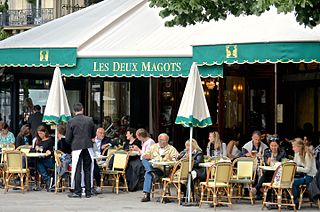
The 6th arrondissement of Paris is one of the 20 arrondissements of the capital city of France. In spoken French, this arrondissement is referred to as le sixième.
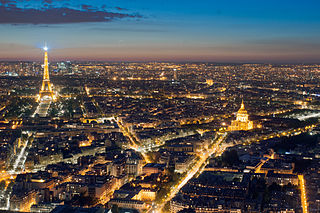
The 7th arrondissement of Paris is one of the 20 arrondissements of the capital city of France. In spoken French, this arrondissement is referred to as le septième.
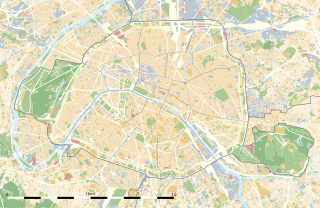
The Île de la Cité is an island in Seine river in the center of Paris. In the 4th century, it was the site of the fortress of the Roman governor. In 508 Clovis I, the first King of the Franks, established his palace on the island. In the 12th century it became an important religious center, the home of Notre-Dame cathedral, and the royal chapel of Sainte-Chapelle, as well as the city's first hospital, the Hôtel-Dieu. It is the crossing point of the city's oldest existing bridge, the Pont Neuf.

Île Saint-Louis, eleven hectares in size, is one of two natural islands in the Seine river, in Paris, France. Île Saint-Louis is connected to the rest of Paris by four bridges to both banks of the river and to the Île de la Cité by the Pont Saint-Louis.

The Quai d'Orsay is a quay in the 7th arrondissement of Paris. It is part of the left bank of the Seine opposite the Place de la Concorde. The Quai becomes the Quai Anatole-France east of the Palais Bourbon, and the Quai Branly west of the Pont de l'Alma.

Louis Tullius Joachim Visconti was an Italian-born French architect and designer.
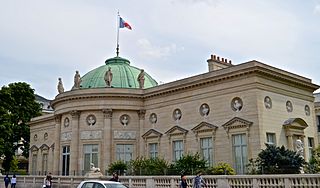
The Palais de la Légion d'honneur is a historic building on the Left Bank of the River Seine in Paris, France. It houses the Musée de la Légion d'honneur and is the seat of the Légion d'honneur, the highest French order of merit.

Germain Boffrand was a French architect. A pupil of Jules Hardouin-Mansart, Germain Boffrand was one of the main creators of the precursor to Rococo called the style Régence, and in his interiors, of the Rococo itself. In his exteriors he held to a monumental Late Baroque classicism with some innovations in spatial planning that were exceptional in France His major commissions, culminating in his interiors at the Hôtel de Soubise, were memorialised in his treatise Livre d'architecture, published in 1745, which served to disseminate the French "Louis XV" style throughout Europe.

Rue du Bac is a street in Paris situated in the 7th arrondissement. The street, which is 1150 m long, begins at the junction of the quais Voltaire and Anatole-France and ends at the rue de Sèvres.

Henri Alfred Marie Jacquemart, often known as Alfred Jacquemart, was a noted French sculptor and animalier. He usually signed his works: A. Jacquemart.

The Boulevard des Belges is a wide and posh avenue located in Les Brotteaux quarter, in the 6th arrondissement of Lyon. It begins with the Quai de Grande Bretagne, runs along the southern part of the Parc de la Tête d'Or until the Avenue Verguin and ends on the Place Jules Ferry, in front of the Gare des Brotteaux. The boulevard is lined with plane trees and is served by two velo'v stations and the line B of the metro.

The Quai Voltaire is a street located in the 7th arrondissement of Paris. 308 meters long, it lies between the Quai Malaquais and Quai Anatole-France. The Quai Voltaire begins at the Rue des Saints-Pères and ends at the Rue de Bac and the Pont Royal.

Albert Lebourg, birth name Albert-Marie Lebourg, also called Albert-Charles Lebourg and Charles Albert Lebourg, was a French Impressionist and Post-Impressionist landscape painter of the Rouen School. Member of the Société des Artistes Français, he actively worked in a luminous Impressionist style, creating more than 2,000 landscapes during his lifetime. The artist was represented by Galerie Mancini in Paris in 1896, in 1899 and 1910 by : Galerie Bernheim-Jeune, 1903 and 1906 at the Galerie Paul Rosenberg, and 1918 and 1923 at Galerie Georges Petit.
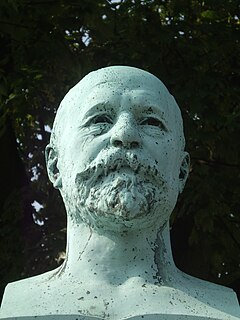
Charles Gauthier was a French sculptor who was made a Chevalier of the Légion d'Honneur in 1872.

Richard Hermann Antoine Bouwens van der Boijen was a French architect. In 1899, he was one of the winners of the Concours de façades de la ville de Paris for the realization of an Hôtel particulier, 8, rue de Lota in the 16th arrondissement of Paris.
The quai des Célestins runs along the Seine in Paris' 4th arrondissement. The quay, or dock, runs into the quai Henri-IV upstream, and downstream becomes the quai de l'Hôtel-de-Ville.

Argentat-sur-Dordogne is a commune in the department of Corrèze, south-central France. The municipality was established on 1 January 2017 by merger of the former communes of Argentat and Saint-Bazile-de-la-Roche.
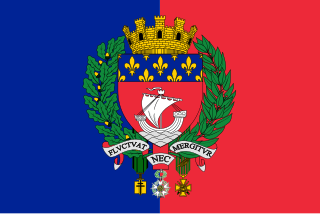
The following outline is provided as an overview of and topical guide to Paris:

Mahmoud Ben Ayed, Mahmoud Ben Ayad or Mahmoud Ben Aïad, born in 1805 in Tunis and died in 1880 in istanbul, was a Tunisian politician. His misappropriation of funds while in office led the Tunisian state to bankruptcy and financial dependence on Europe, and was thus one of the causes of the establishment of the French protectorate of Tunisia.



















